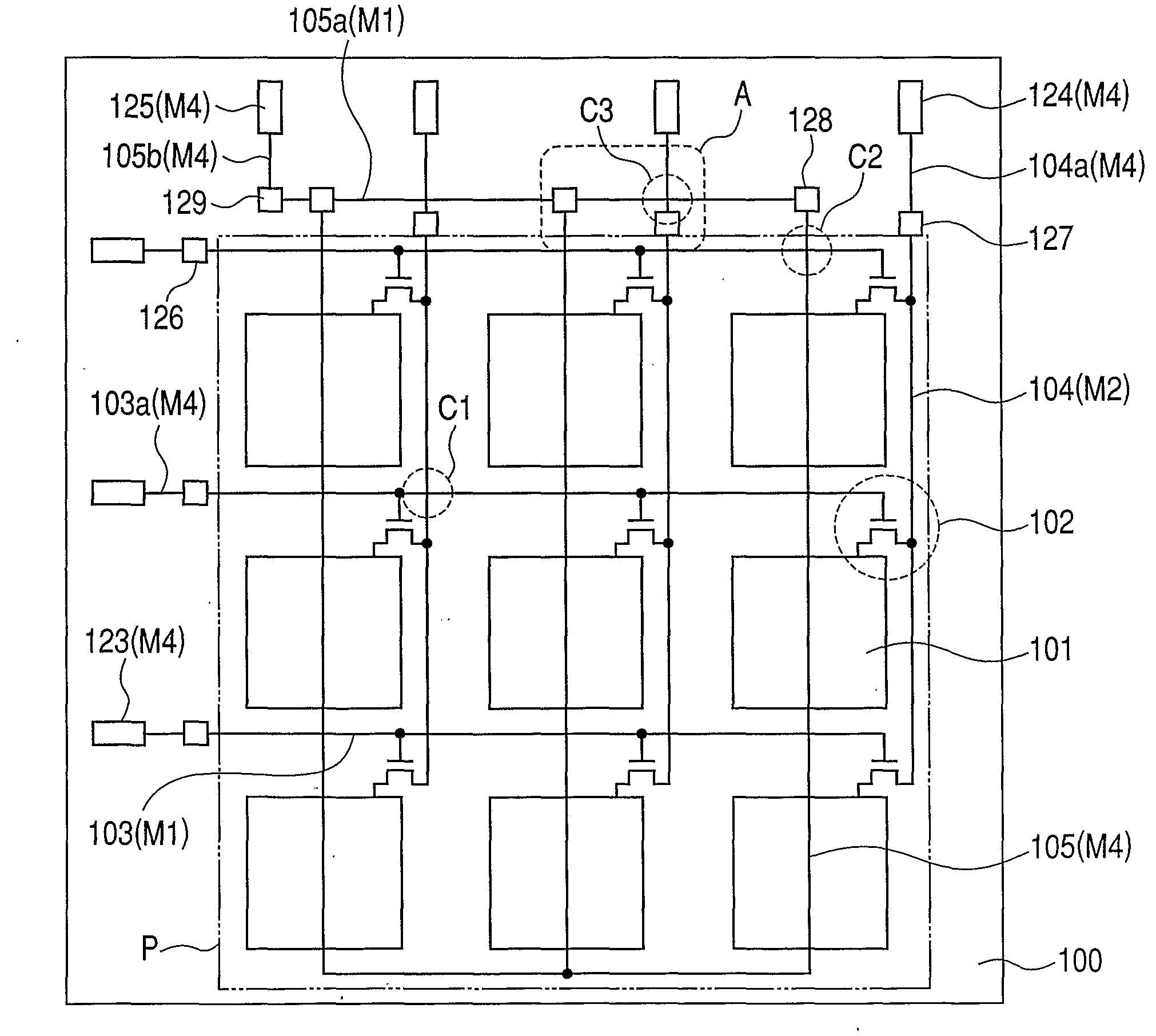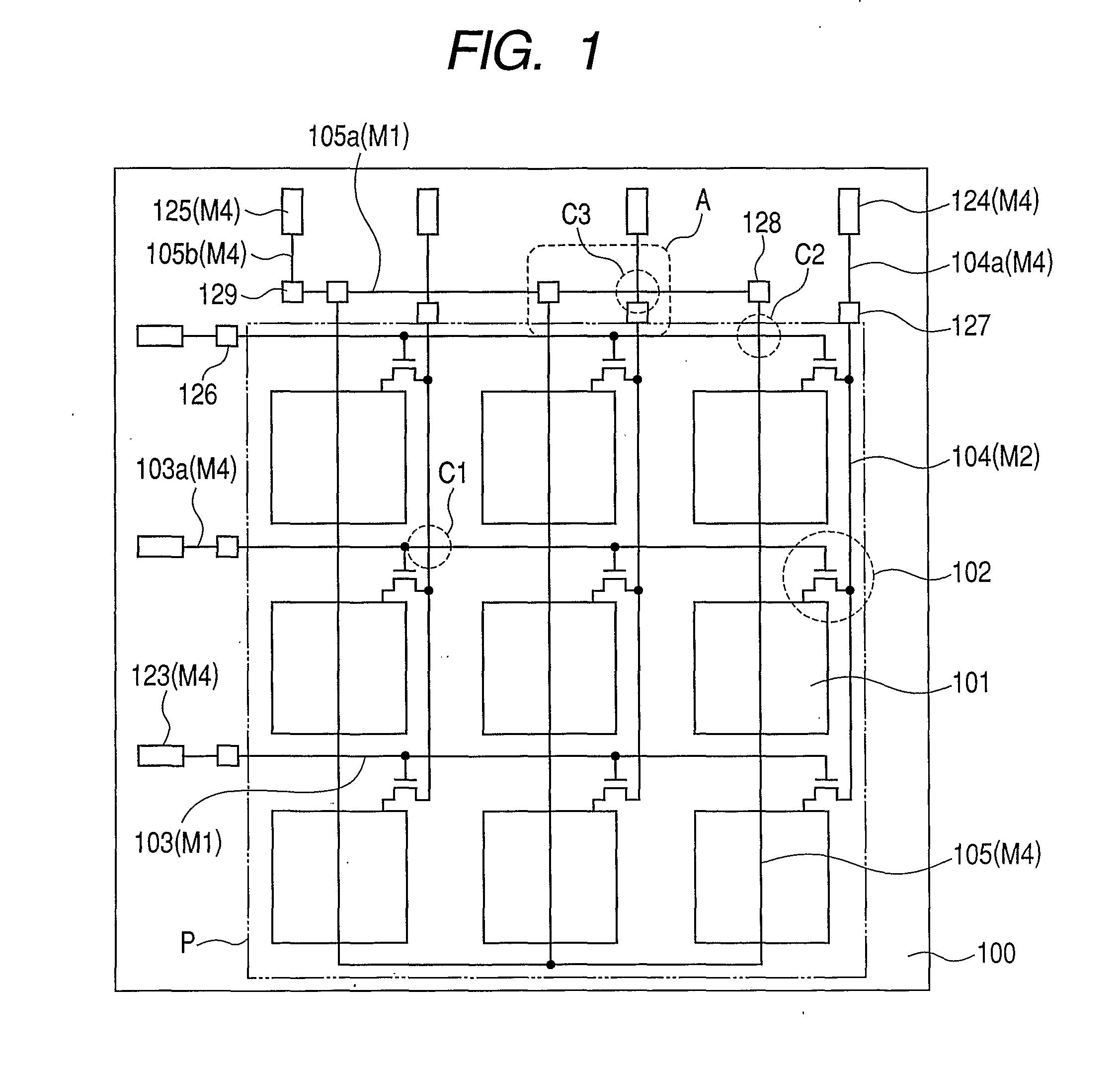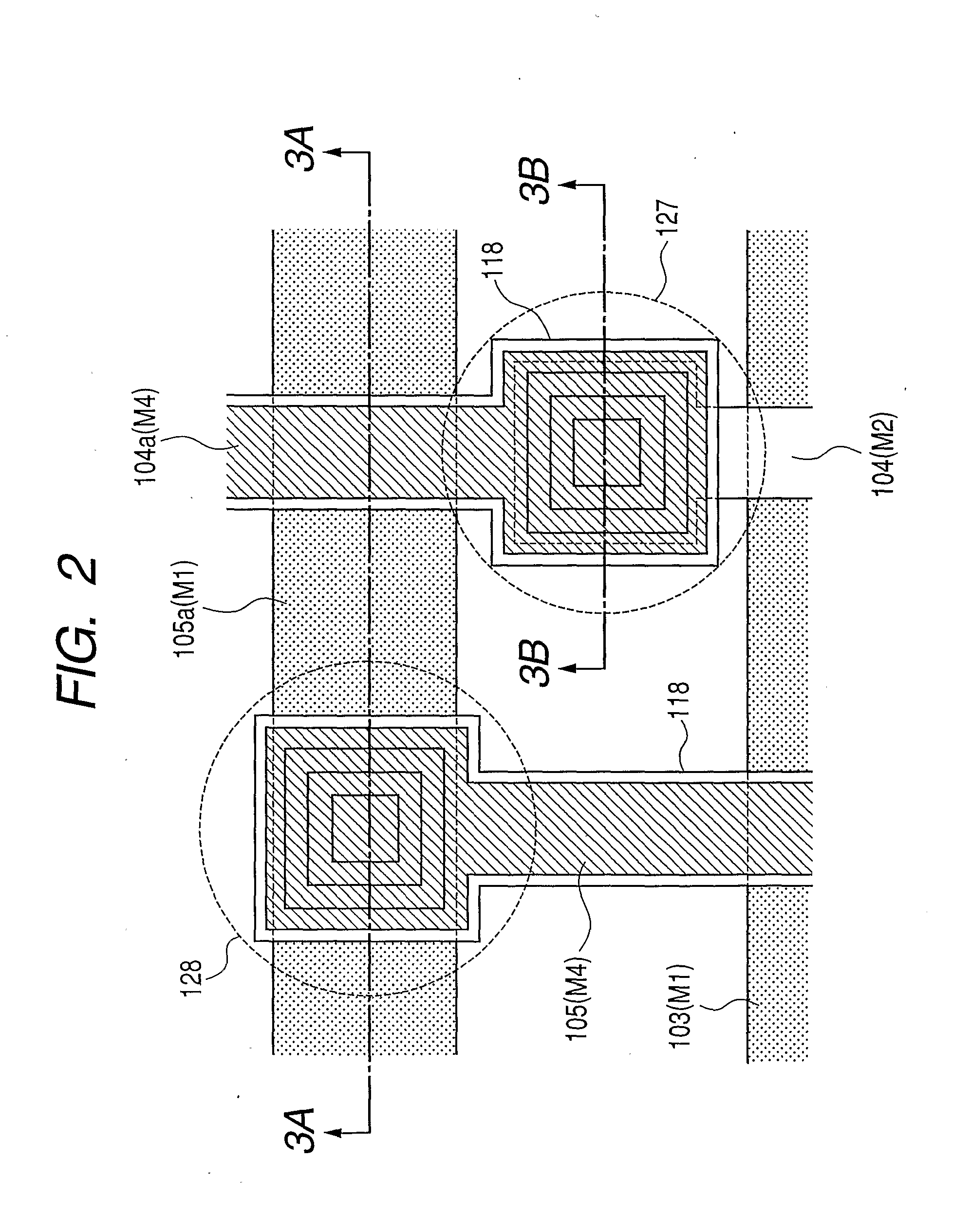Conversion apparatus, radiation detecting apparatus, and radiation detecting system
a technology of radiation detection apparatus and conversion apparatus, which is applied in the direction of radiation intensity measurement, instruments, x/gamma/cosmic radiation measurement, etc., can solve the problems of large apparatus, high cost, and complex process of obtaining radioactive ray image data, so as to prevent leakage, suppress noise, and high s/n ratio
- Summary
- Abstract
- Description
- Claims
- Application Information
AI Technical Summary
Benefits of technology
Problems solved by technology
Method used
Image
Examples
first embodiment
[0033]Referring to FIGS. 1 to 3B, a first embodiment of the present invention will be described in detail. FIG. 1 is a conceptual plan diagram showing a photoelectric conversion apparatus and a radiation detecting apparatus according to the first embodiment of the present invention. FIG. 2 is a conceptual plan diagram of the enlarged area A of FIG. 1. FIG. 3A is a schematic sectional diagram taken on the line 3A-3A of FIG. 2. FIG. 3B is a schematic sectional diagram taken on the line 3B-3B of FIG. 2. In FIGS. 1 to 3B, the same components as those of the conventional FPD shown in FIGS. 10 to 12 will be denoted by the same reference numerals, and detailed description thereof will be omitted.
[0034]In FIGS. 1 to 3B, reference numeral 100 denotes an insulating substrate, 101 a photoelectric conversion element which is a conversion element, 102 a switching element, 103 a drive wiring, 104 a signal wiring, and 105 a bias wiring. For the insulating substrate 100, a glass substrate, a quartz...
second embodiment
[0044]Referring to FIGS. 5 to 6B, a second embodiment of the present invention will be described in detail. FIG. 5 is a conceptual plan diagram in which the area A of FIG. 1 is enlarged. FIG. 6A is a schematic sectional diagram cut on the line 6A-6A of FIG. 5, and FIG. 6B is a schematic sectional diagram cut on the line 6B-6B of FIG. 5. In FIGS. 5 to 6B, components the same as those of the conventional FPD shown in FIGS. 10 to 12, and those of the first embodiment shown in FIGS. 1 to 3B will be denoted by the same reference numerals, and detailed description thereof will be omitted.
[0045]The contact 128 according to the first embodiment is formed via the third metal layer 116 disposed in the one opening on the first bias wiring drawing portion 105a. While the contact 128′ according to the second embodiment is formed via the third metal layer 116 disposed in the two openings on the first bias wiring drawing portion 105a. That is a difference between the first and second embodiments. ...
third embodiment
[0050]Referring to FIGS. 7 to 8B, a third embodiment of the present invention will be described in detail. FIG. 7 is a conceptual plan diagram in which the area A of FIG. 1 is enlarged. FIG. 8A is a schematic sectional diagram cut on the line 8A-8A of FIG. 7, and FIG. 8B is a schematic sectional diagram cut on the line 8B-8B of FIG. 7. In FIGS. 7 to 8B, components the same as those of the conventional FPD shown in FIGS. 10 to 12, those of the first embodiment shown in FIGS. 1 to 3B, and those of the second embodiment shown in FIGS. 5 to 6B will be denoted by the same reference numerals, and detailed description thereof will be omitted.
[0051]According to the second embodiment, the contact 128′ formed via the third metal layer 116 at the two openings on the first bias wiring drawing portion 105a. According to the third embodiment, the contact 128″ is formed via the third metal layer 116 at the opening on the first bias wiring drawing portion 105a and at the opening not on the first bi...
PUM
 Login to View More
Login to View More Abstract
Description
Claims
Application Information
 Login to View More
Login to View More - R&D
- Intellectual Property
- Life Sciences
- Materials
- Tech Scout
- Unparalleled Data Quality
- Higher Quality Content
- 60% Fewer Hallucinations
Browse by: Latest US Patents, China's latest patents, Technical Efficacy Thesaurus, Application Domain, Technology Topic, Popular Technical Reports.
© 2025 PatSnap. All rights reserved.Legal|Privacy policy|Modern Slavery Act Transparency Statement|Sitemap|About US| Contact US: help@patsnap.com



